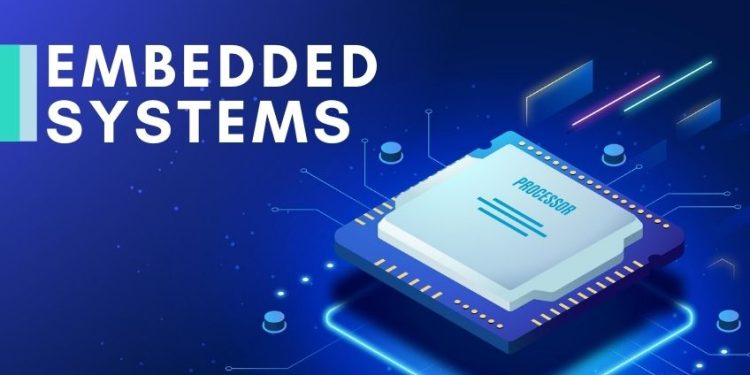Embedded systems are all around us, from the tiny microcontrollers inside our household appliances to the complex systems that power our cars and airplanes.
As technology evolves, the demand for skilled professionals in this field is certainly increasing. But how do you develop the skills necessary to work with embedded systems? Fortunately, online courses and certificates have made it easier to learn these valuable skills from the comfort of your own home.
Whether you’re a novice or an experienced embedded systems professional, there’s a course to help you advance your knowledge.
The best online embedded systems courses are designed to provide you with a thorough understanding of the field while allowing you to develop the necessary skills. In addition, these courses offer instruction and assessments, so you’ll know where you stand and how far you need to go.
1. Develop Embedded Systems Using Embedded C On AVR [Tutorialpoint]
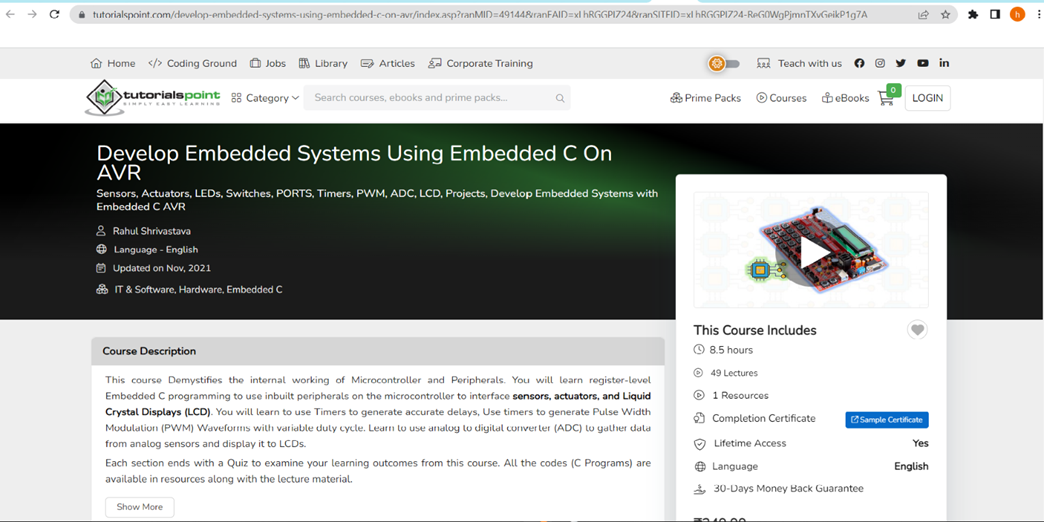
Tutorials Point offers a course that aims to equip students with the skills and knowledge to create embedded systems using embedded C on Atmel’s AVR microcontrollers. It covers topics such as an introduction to AVR microcontrollers and embedded C, development and debugging, and interfacing with external devices. The course also includes practical examples and exercises to help learners master the concepts.
Level: Beginner
Certificate: Certificate of Completion
Cost: Paid
Duration: 8.5 hours
2. USB Behind the Scenes: Hands-on HID Firmware Development [Udemy]
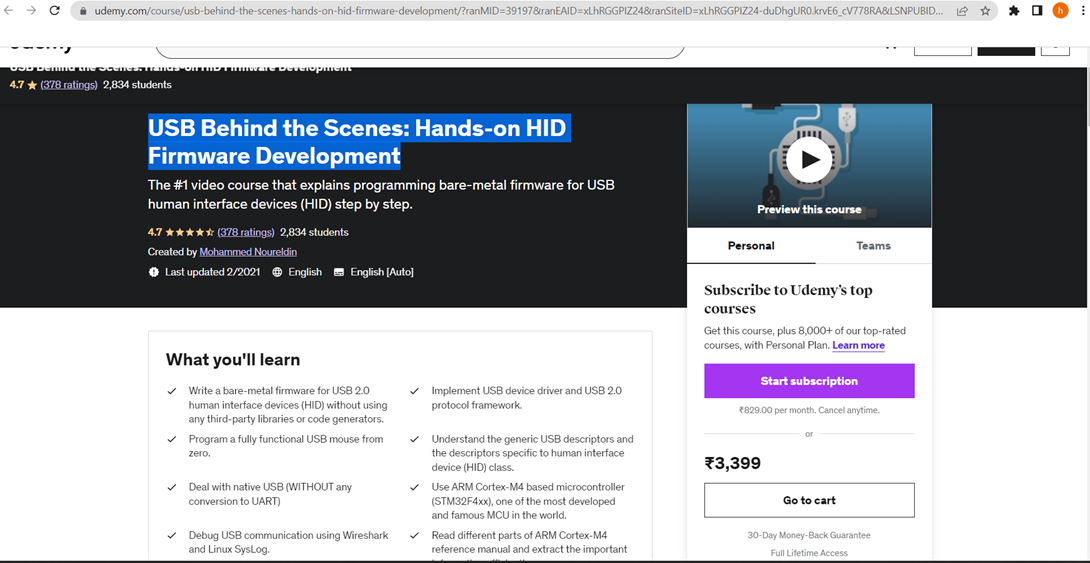
This course provides an introduction to USB and HID firmware development. It covers the fundamentals of USB, how to write USB firmware for HID devices, and how to debug USB issues. The course also covers in-depth topics such as USB descriptors, bootloaders, and how to debug and troubleshoot USB issues. It comes with hands-on examples that allow students to develop and test their own HID firmware. With more than 14 hours of video and over 166 lectures, this course is a valuable resource for anyone interested in developing USB and HID firmware.
Level: Intermediate
Certificate: Yes
Cost: Paid
Duration: 14 hours, 29 minutes
3. Embedded Systems Programming: Getting Started [Pluralsight]
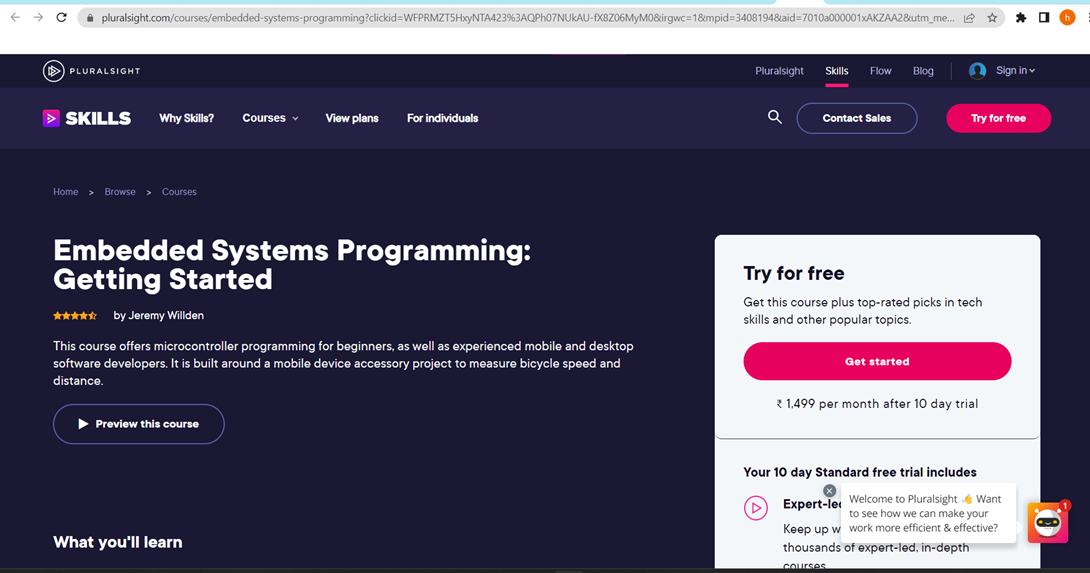
This Embedded Systems course is designed to provide foundational knowledge of the limitations of embedded processors. This course covers the important skills required for reading and writing I/O lines and configuring peripherals. This includes analog and digital converters, counter/timer modules, and the serial interface or UART. Additionally, learners will discover how they can manage the clock system of the processor for optimal performance while having minimal power consumption. With this course, learners will equip themselves with the basic skills required for embedded firmware development.
Level: Beginner
Certificate: Yes
Cost: Paid
Duration: 3 Hours and 6 Minutes
4. Embedded Software and Hardware Architecture [Coursera]
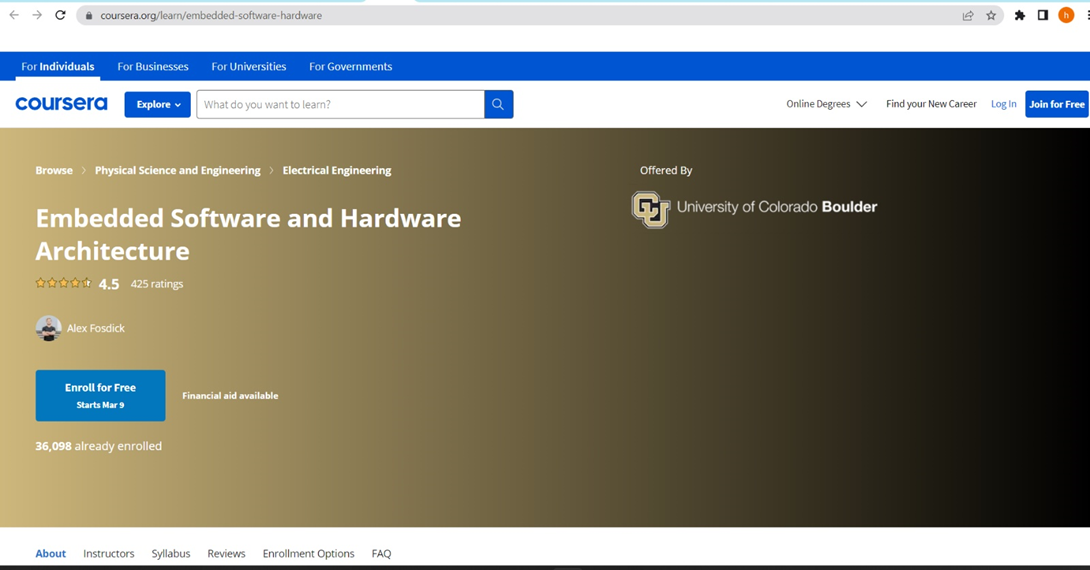
Embedded Software and Hardware Architecture is an introductory course in embedded software and hardware design. The course helps students gain experience in writing basic firmware directly to interface with readable, effective, and portable design practices. The course will also teach students the interaction and configuration of both the underlying ARM architecture and the MSP432 microcontroller platform. In order to complete the course assignments, students will need to have access to the Texas Instruments LaunchPad with the MSP432 microcontroller. This course is an excellent starting point for those interested in embedded programming and hardware design.
Level: Intermediate
Certificate: Yes
Cost: Free
Duration: 4 Hours
5. Introduction to Embedded Systems Software and Development Environments [Coursera]
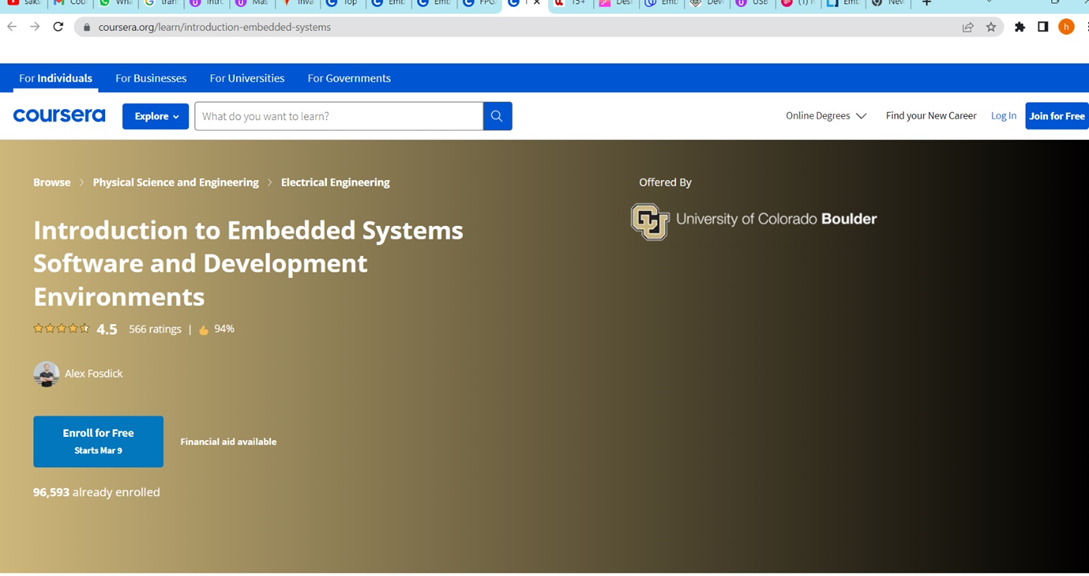
This course introduces USB and HID firmware development, making it a key resource for those looking to delve into embedded systems courses. It covers the fundamentals of USB, how to write USB firmware for HID devices, and how to debug USB issues. In-depth topics such as USB descriptors, bootloaders, and how to debug and troubleshoot USB issues are also discussed. Through hands-on examples, students can develop and test their own HID firmware. With more than 14 hours of video and over 166 lectures, this course is a valuable resource for anyone interested in developing USB and HID firmware.
Level: Intermediate
Certificate: Yes
Cost: Free
Duration: 9 Hours
6. Mastering Microcontroller and Embedded Driver Development [Udemy]
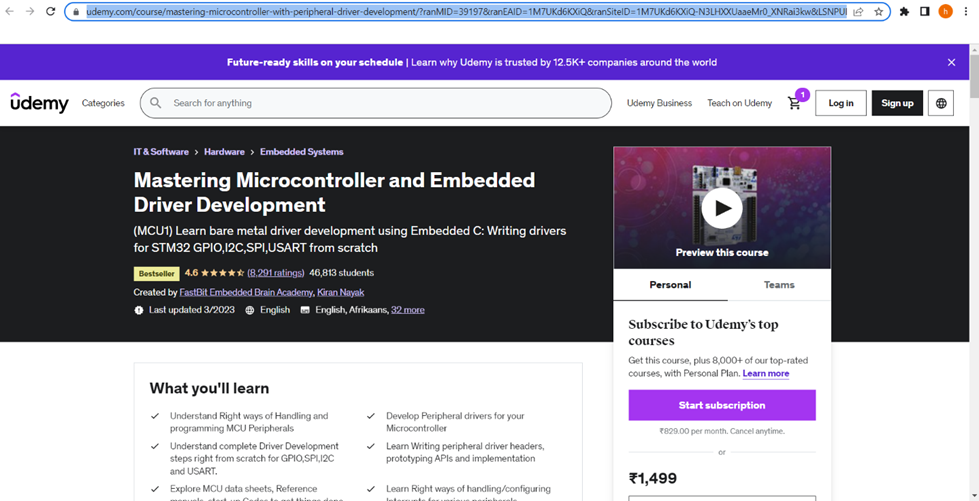
This course, “Mastering Microcontroller and Embedded Driver Development,” is designed to help the learner understand the right ways of handling and programming MCU peripherals. The course covers topics such as peripheral driver headers, prototyping APIs, MCU data sheets, reference manuals, start-up codes, interrupt handling, control registers, bus interfaces, clock sources, MCU clock configurations, and more. It also provides case studies to help learners quickly debug peripheral issues.
Level: Intermediate
Certificate: Yes
Cost: Paid
Duration: 28.5 hours
7. FPGA Design for Embedded Systems Specialization [Coursera]
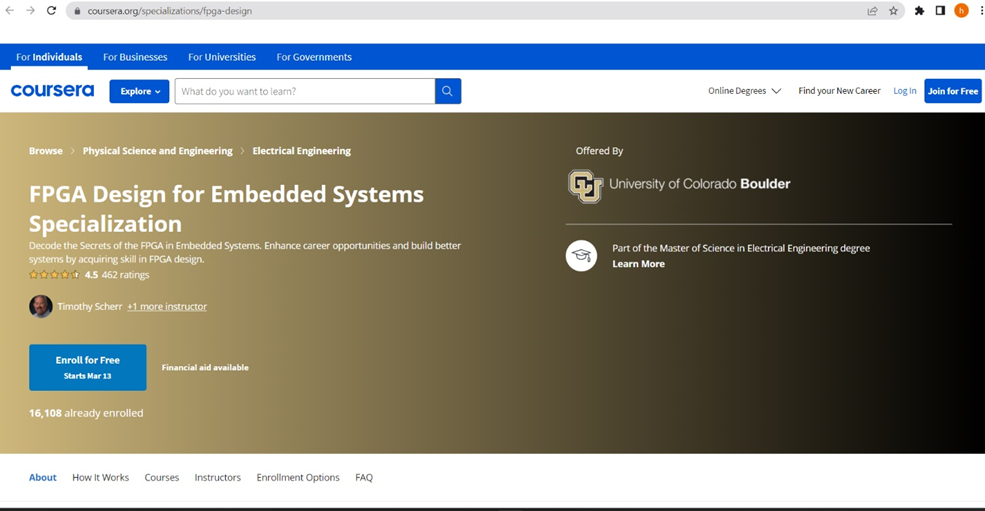
This is a comprehensive course that offers fundamentals of FPGA design for embedded systems. Embedded systems courses like this cover all aspects of FPGA design, from conception to implementation and debugging. Learners will apply hierarchical design methods to create bigger designs in VHDL or Verilog, create a working system-on-chip design with Nios II soft processor, RAM, and FLASH memory, and several peripherals, and understand and apply to fit, timing constraints, simulation, and programming. Upon completion, learners will thoroughly understand FPGA design and its applications.
Level: Intermediate
Certificate: Yes
Cost: Free
Duration: 4 Months
8. Introduction to Embedded Systems [Udemy]
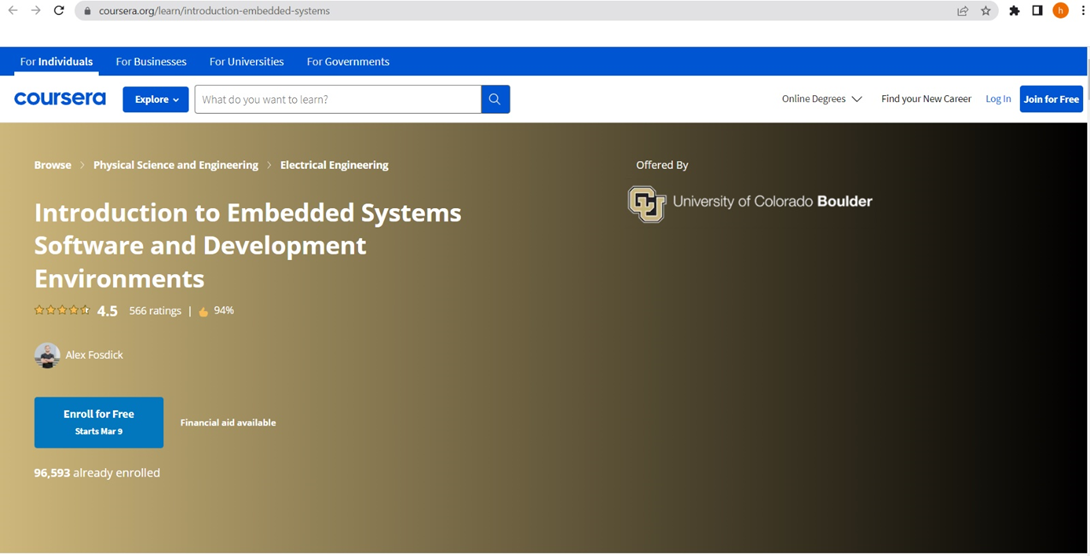
Introduction to Embedded Systems is an online course designed to help beginners gain a foundation in embedded systems. Through this course, students will learn the basics of embedded systems, from building blocks to development tools. They will also gain an understanding of the different components of an embedded system and how to develop an embedded system. The course covers topics such as microcontrollers, memory, and communication protocols. It will also provide an example of the development of an embedded system to give students a better understanding of the process.
Level: Beginner
Certificate: Certificate of Completion
Cost: Paid
Duration: 1.5 Hours
9. Embedding Sensors and Motors Specialization [Coursera]
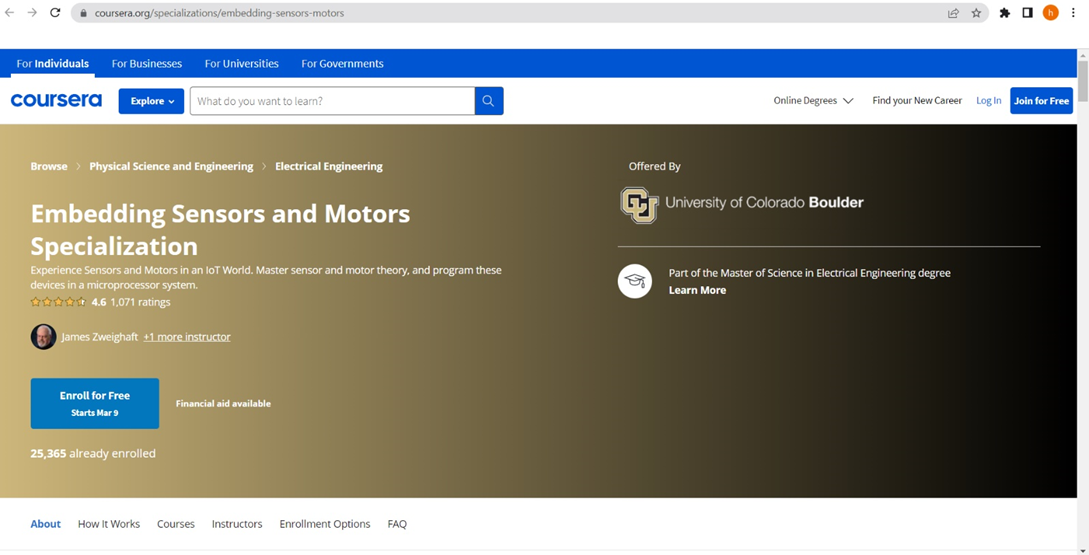
This specialization course is designed to provide learners with the skills and knowledge to confidently embed sensors and motors into embedded systems. Learners will learn to study and understand a lab experiment or production process and how to select the right sensor solution to take real-time process data. Learners will also create the hardware and firmware needed to process the sensor signals and feed data to a microprocessor for further evaluation. This specialization will also cover modifying existing hardware schematics to add sensors and related circuitry to an existing microprocessor system. Upon completing the specialization, learners will have the skills and knowledge to confidently design and implement embedded systems with sensors and motors.
Level: Intermediate
Certificate: Yes
Cost: Free
Duration: 5 Months
Conclusion
Embedded systems courses have allowed individuals to learn and enhance their skills in this field. As the world becomes more reliant on technology, the demand for experts in embedded systems continues to grow.
The courses discussed above offer diverse options, catering to beginners, professionals, and advanced learners seeking to acquire valuable knowledge and skills in embedded systems.
Frequently Asked Questions
Which Programming Language Is Best for Embedded Systems?
Selecting an embedded system’s most appropriate programming language can impact its performance. While the project’s specific requirements often dictate the language choice, some frequently utilized languages include C, C++, Assembly, and Python. Each language boasts unique features.
Which Is Better, Embedded or Java?
Embedded systems and Java serve different purposes. Java’s portability and ease of development make it suitable for some embedded projects, while low-level languages like C or Assembly are better suited for others. Ultimately, the choice of language depends on the project’s specific needs.


